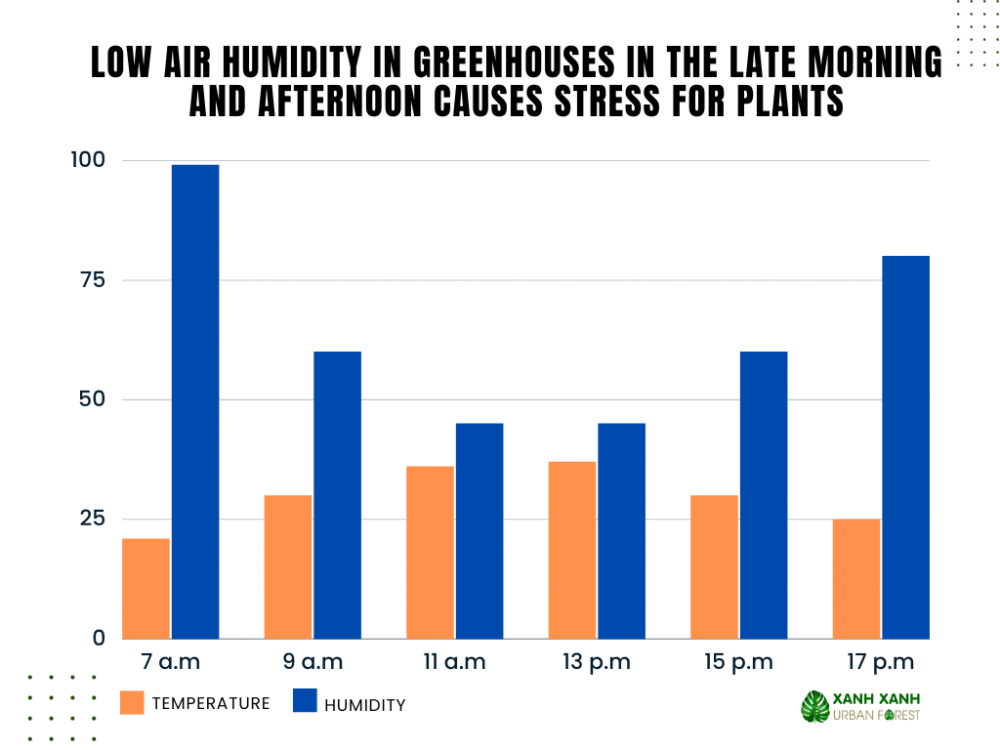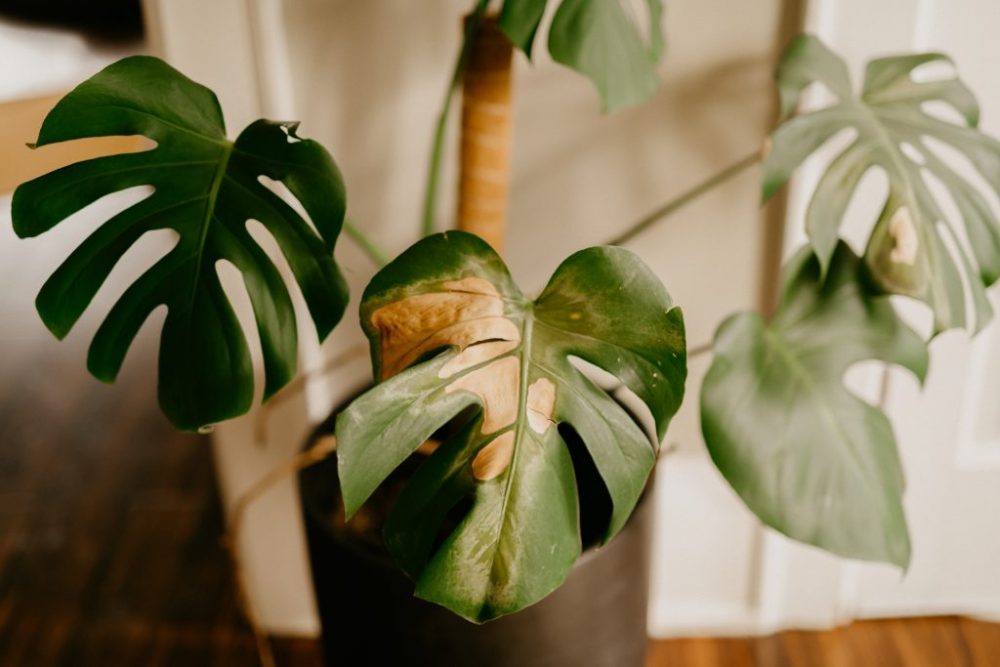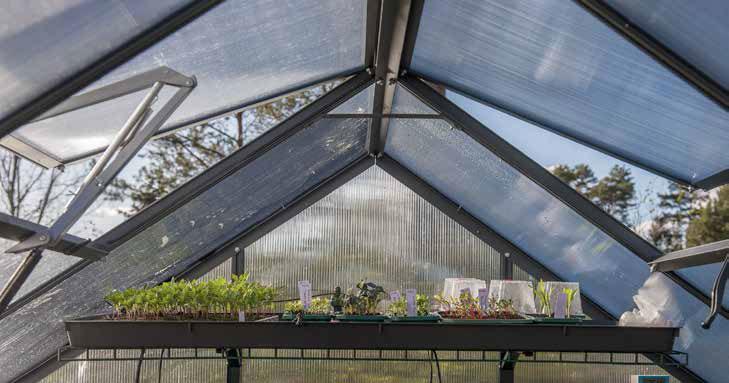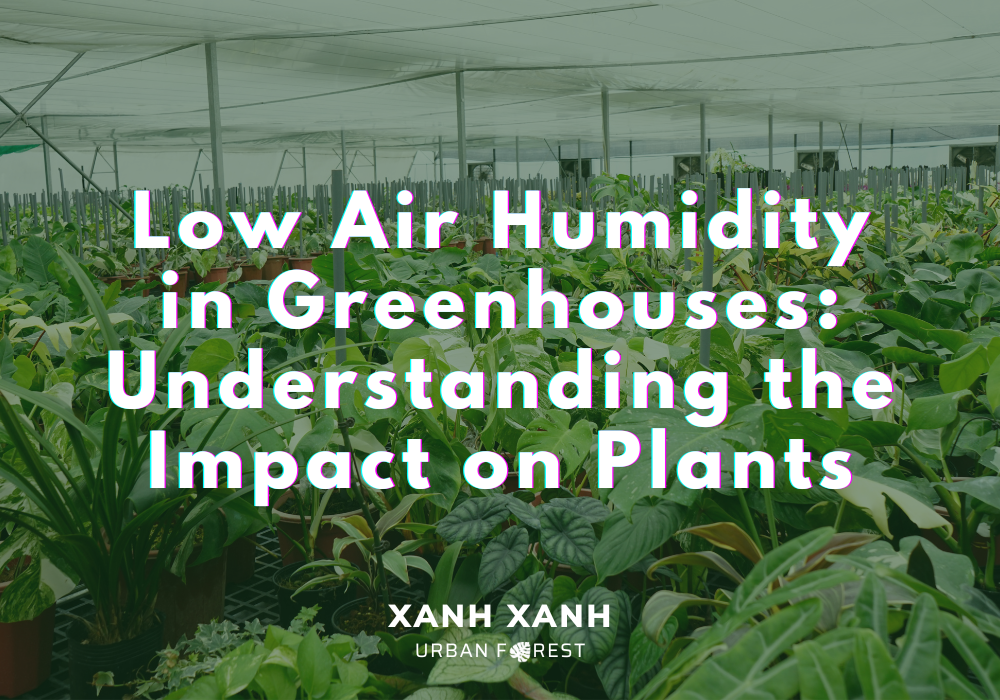Table of Contents
1. Introduction
Step into the world of greenhouse cultivation, where the delicate balance of lush plant growth meets the challenge of low air humidity. Learn how this often overlooked factor, prevalent in the late morning and afternoon, can disrupt plant health and development. Explore effective solutions to counteract the impacts and foster a flourishing greenhouse environment.
2. The Greenhouse Environment: A Temperature and Humidity Overview
Every sunny day, the temperature and humidity variations within the greenhouse are recorded and presented through informative charts. This consistent and attentive monitoring process serves as a crucial linchpin in comprehending the intricate nuances of low air humidity. By dissecting these patterns, Xanh Xanh gains valuable insights into the challenges they pose for plants during distinct periods of the day, facilitating informed countermeasures and fostering optimal growth conditions.

3. Unraveling the Consequences: Impact of Low Air Humidity
3.1. Leaf Burn
Low humidity, acting as a silent assailant, accelerates the evaporation of water from delicate plant leaves. This excessive water loss leads to desiccation and ultimately, leaf burn. Plants with waxy leaves are particularly susceptible, falling victim to this phenomenon.

3.2. Stunted Growth
Plants require a harmonious blend of nutrients and water for optimal growth. However, when humidity levels plummet, plants struggle to absorb these vital elements. This nutrient scarcity results in stunted growth, impeding the development of the very foliage we seek to nurture.
3.3. Increased susceptibility to pests and diseases
The arid embrace of low humidity creates an ideal breeding ground for pests and diseases. The weakened state of plants in such an environment makes them easy targets. This increased susceptibility opens the door for an infestation that can wreak havoc on the greenhouse ecosystem.
4. Nurturing Solutions: Combating Low Air Humidity
4.1. The Power of Watering
Water, the elixir of life, can also come to the rescue when combating low humidity. A strategic approach involves watering the plants around 10–11 a.m and again at 13:30–14 p.m. This temporary surge in moisture not only hydrates the leaves but also elevates the humidity within the greenhouse.
4.2. Foggers: Enveloping Greenhouses in Mist
An ingenious solution lies in the use of foggers. Emitting a fine mist of water into the air, these devices infuse the atmosphere with humidity. This moisture-laden ambiance not only benefits the plants but also creates a cooling effect, fostering an environment conducive to growth.
4.3. Open vents in the roof of the greenhouse
Opening vents in the greenhouse’s roof reveal a subtle yet effective mechanism to regulate temperature and humidity. As the temperature rises within the greenhouse, the vents facilitate the release of hot air. This orchestrated exchange contributes to maintaining a favorable environment for plant prosperity.

5. A Holistic Approach: Ensuring Vibrant Growth
The challenges posed by low air humidity are undeniable, but they are not insurmountable. By embracing a multi-pronged approach that encompasses strategic watering, foggers, and vent manipulation, the adverse effects of low humidity can be mitigated. Empowering plants to thrive requires a concerted effort that capitalizes on nature’s solutions.
6. Conclusion
In the enchanting world of greenhouses, the battle against low air humidity is an essential one. Understanding its repercussions on plants, from leaf burn to stunted growth, empowers us to take action. By adopting innovative strategies like timed watering, foggers, and vent utilization, we pave the way for robust plant development. Let us harmonize the dance of humidity and temperature to cultivate a thriving sanctuary within our greenhouses.
Discover more interesting post with Xanh Xanh: Plant Care Kits
If you have any questions, you can contact us via:

